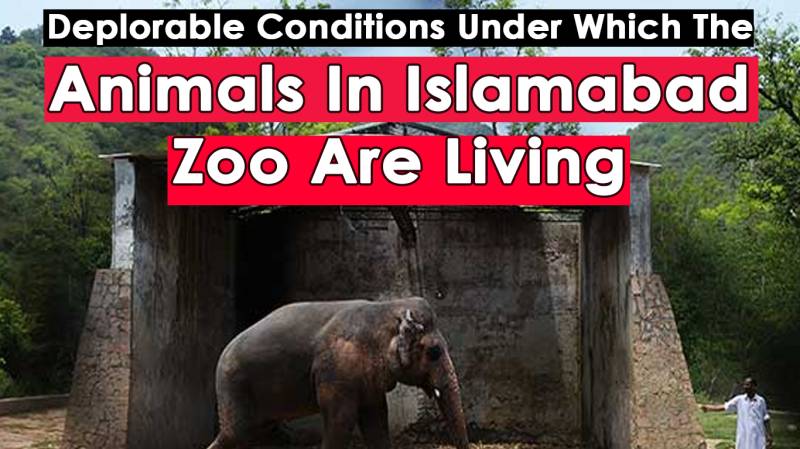
The wildlife parks and zoos of Pakistan are characterized by a quite weak governance system. The sector of wildlife in Pakistan is largely treated as a provincial instead of a political matter. Each province has its own wildlife department governed by its special minister. The wildlife parks and zoos are usually governed and ruled by the forest departments of each province of Pakistan. Pakistan’s wildlife department is governed by six distinct laws and regulations. The majority of these laws date back to mid-1970s with just one major amendment made in 1990. Sadly, these laws in practice have not adhered to principles of continuous improvement of the wildlife habitats and zoos in Pakistan.
Instead of protection and conservation of the endangered species, the focus is primarily on development and improvement of the wildlife parks and zoos. The animals lying in the zoos and wildlife parks of Pakistan are seen to be ignored with regard to their physical and mental well-being. They are not properly provided with adequate nutritional food and often not treated effectively against their diseases.
There are about 10 public zoos, 25 private zoos and 28 wildlife parks in Pakistan. Unfortunately, neither of these is authorized by any recognized association of zoo and aquarium. Not only inadequate food and nutrition, several other environmental issues also thwart their well-being. For instance, there is a day and a night zoo in Karachi named as Danzoo. It makes an ample use of lights at night. The exposure of animals to light at nights especially is deemed to be counter-productive to their emotional and reproductive health. Several zoos lack veterinary professionals, owing to which animals do not get necessary medical help whenever required. Animals dying due to lack of adequate life saving treatments adds to the plight of zoos in Pakistan.
Some animals in both public and private zoos have been found to be suffering from severe mental illnesses developing from loneliness. A prime example is of Kaavan, a lonely elephant in Marghazar Zoo of Islamabad, whose plight recently caused an international outcry. An animal rights activist and American singer Cher also raised voice for the confined lonely Kaavan. The elephant was exposed to minimum shelter amidst scorching heat of summers and it had been locked up for twenty-six years. A recent move by Pakistan’s court to free Kaavan and allowing it to travel to Cambodia has been a great triumph for the animal rights activists. Currently, Kaavan is rehabilitating in wildlife sanctuary of Cambodia, which houses more than 80 elephants and is well equipped with facilities.
The lions confined in small and concrete floored cages of Lahore as well as wild hyenas kept in private small zoos of Karachi portray a scenario of misery in the zoos of Pakistan. These animals are provided the least conducive environment in the zoos whereas these are accustomed to living in an open environment.
In light of the dismal zoo conditions, animal rights activists and zoologists have asserted that it is indeed cruel and unethical to remove the innocent wildlife from its natural habitat and then confining it in a cage. There is a dire need to improve the environmental conditions and facilities for the wildlife creatures kept in the zoos of Pakistan so that our zoos become a source of marvel and pride across the globe.
Instead of protection and conservation of the endangered species, the focus is primarily on development and improvement of the wildlife parks and zoos. The animals lying in the zoos and wildlife parks of Pakistan are seen to be ignored with regard to their physical and mental well-being. They are not properly provided with adequate nutritional food and often not treated effectively against their diseases.
There are about 10 public zoos, 25 private zoos and 28 wildlife parks in Pakistan. Unfortunately, neither of these is authorized by any recognized association of zoo and aquarium. Not only inadequate food and nutrition, several other environmental issues also thwart their well-being. For instance, there is a day and a night zoo in Karachi named as Danzoo. It makes an ample use of lights at night. The exposure of animals to light at nights especially is deemed to be counter-productive to their emotional and reproductive health. Several zoos lack veterinary professionals, owing to which animals do not get necessary medical help whenever required. Animals dying due to lack of adequate life saving treatments adds to the plight of zoos in Pakistan.
Some animals in both public and private zoos have been found to be suffering from severe mental illnesses developing from loneliness. A prime example is of Kaavan, a lonely elephant in Marghazar Zoo of Islamabad, whose plight recently caused an international outcry. An animal rights activist and American singer Cher also raised voice for the confined lonely Kaavan. The elephant was exposed to minimum shelter amidst scorching heat of summers and it had been locked up for twenty-six years. A recent move by Pakistan’s court to free Kaavan and allowing it to travel to Cambodia has been a great triumph for the animal rights activists. Currently, Kaavan is rehabilitating in wildlife sanctuary of Cambodia, which houses more than 80 elephants and is well equipped with facilities.
The lions confined in small and concrete floored cages of Lahore as well as wild hyenas kept in private small zoos of Karachi portray a scenario of misery in the zoos of Pakistan. These animals are provided the least conducive environment in the zoos whereas these are accustomed to living in an open environment.
In light of the dismal zoo conditions, animal rights activists and zoologists have asserted that it is indeed cruel and unethical to remove the innocent wildlife from its natural habitat and then confining it in a cage. There is a dire need to improve the environmental conditions and facilities for the wildlife creatures kept in the zoos of Pakistan so that our zoos become a source of marvel and pride across the globe.
